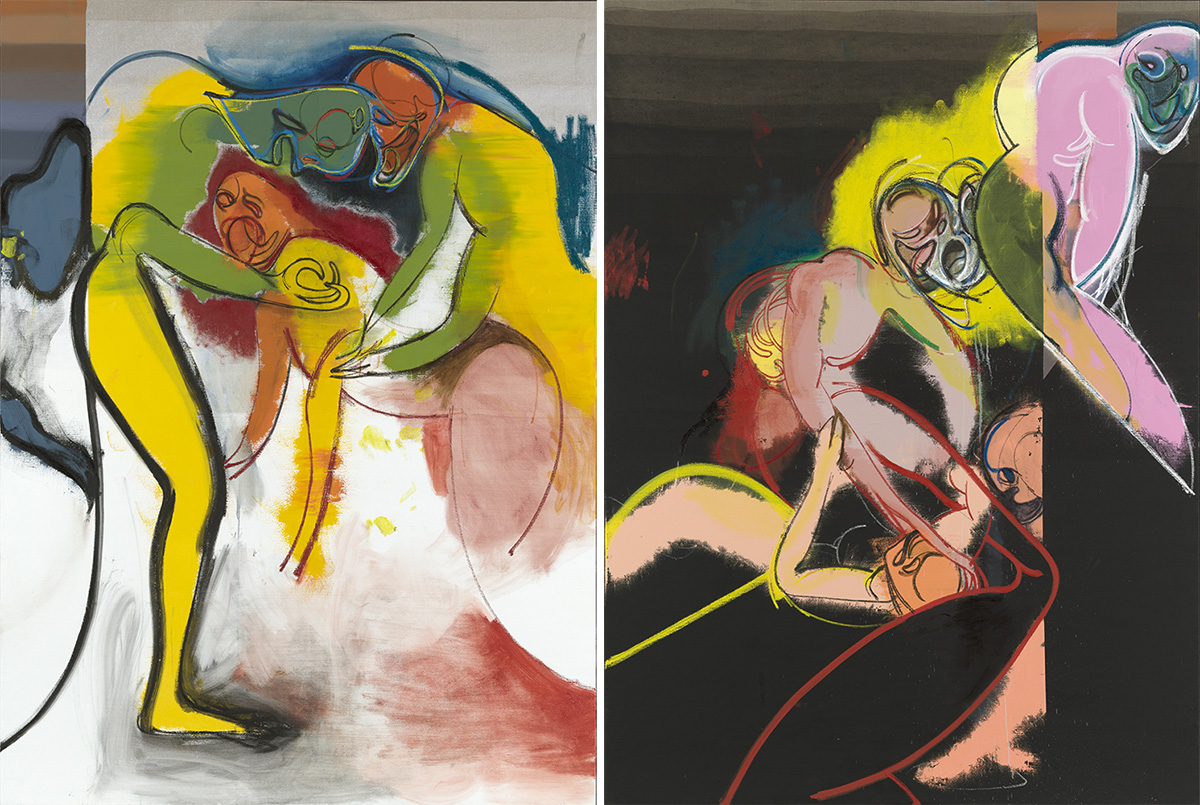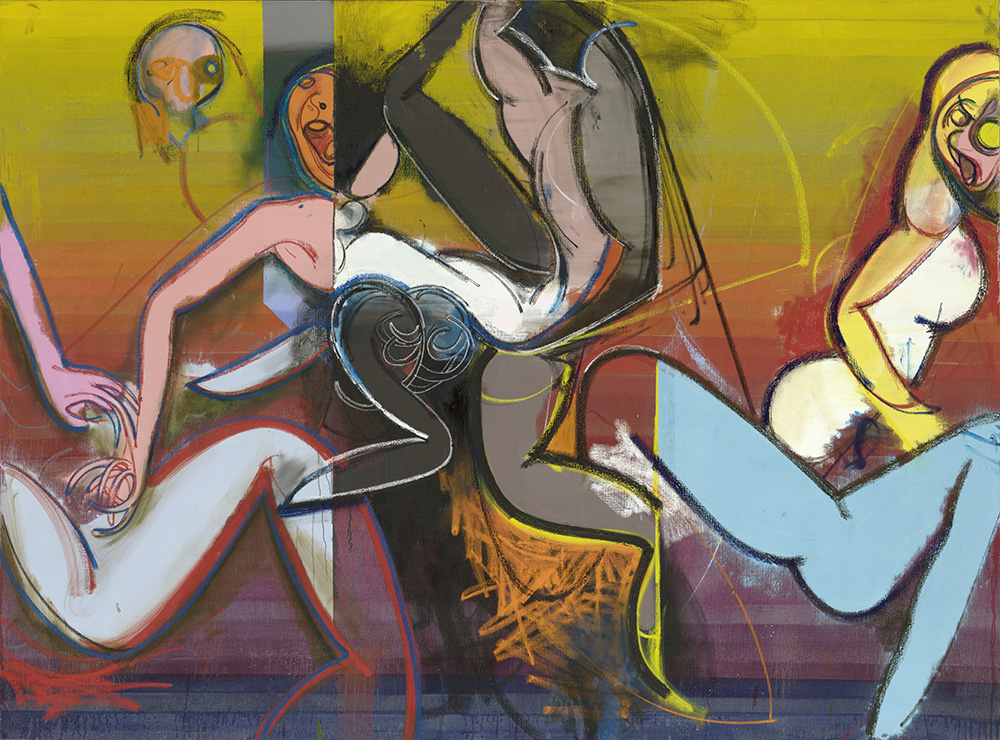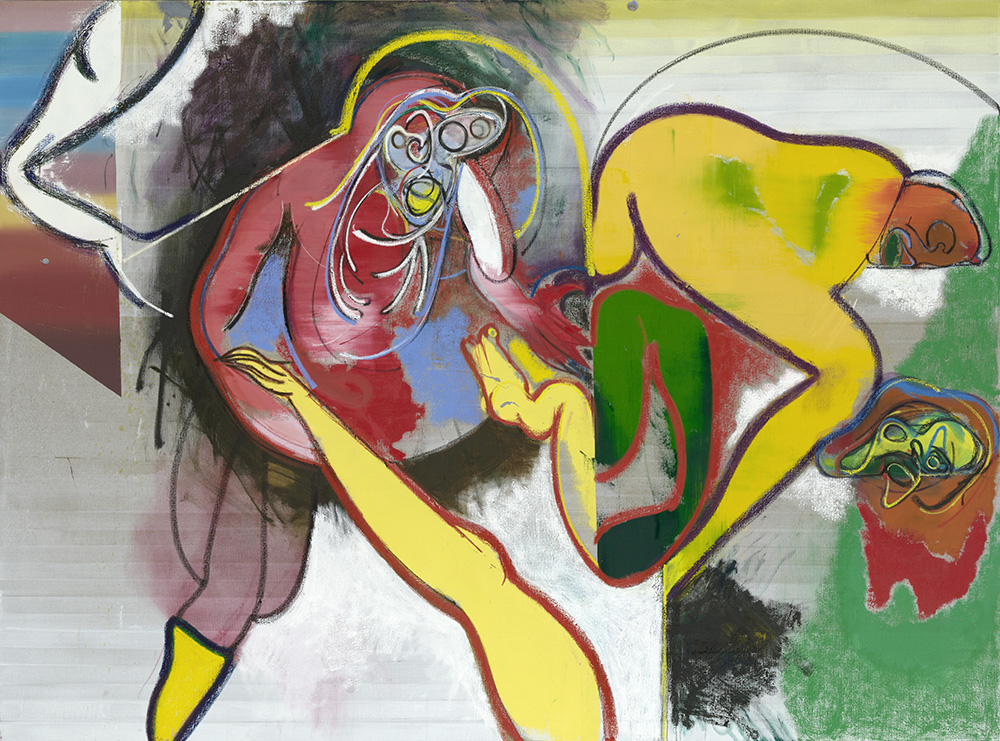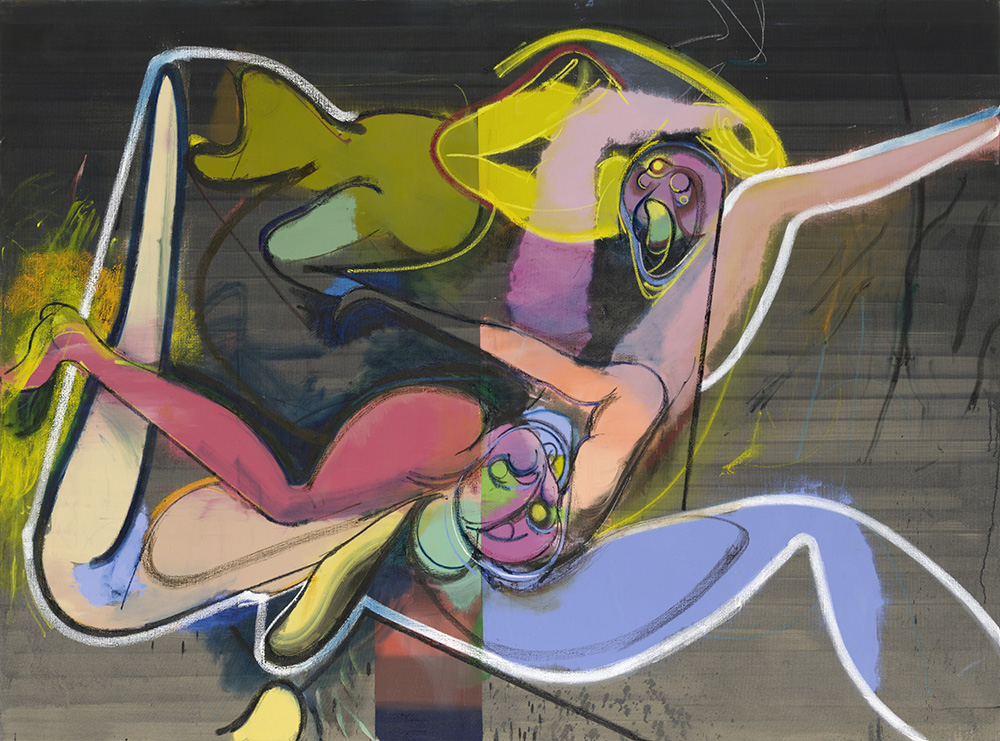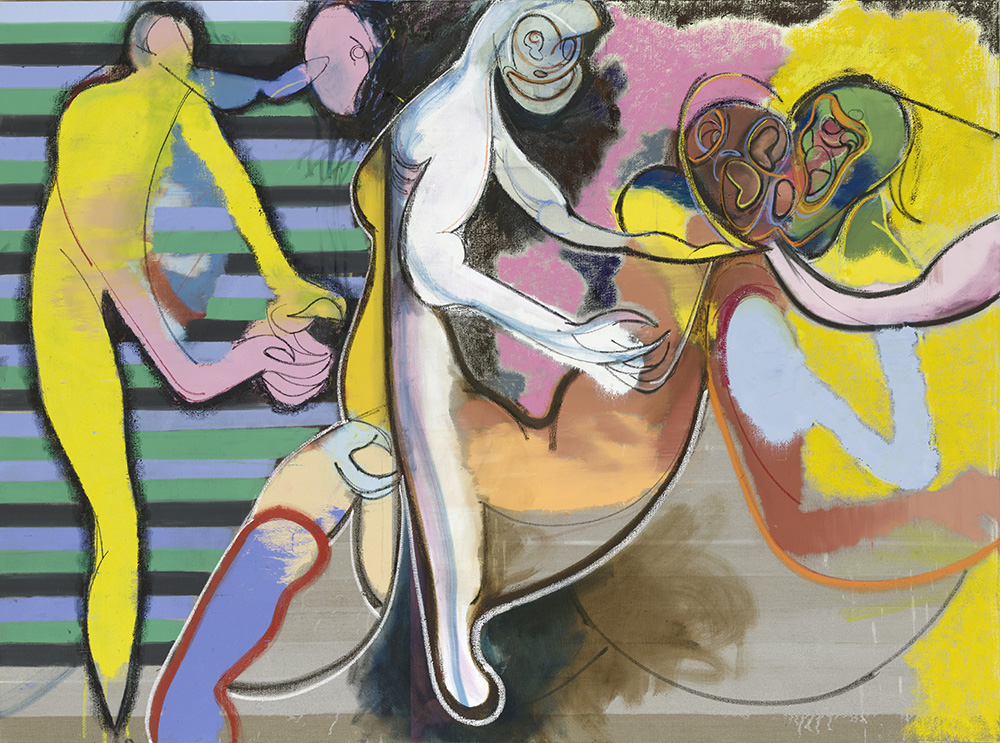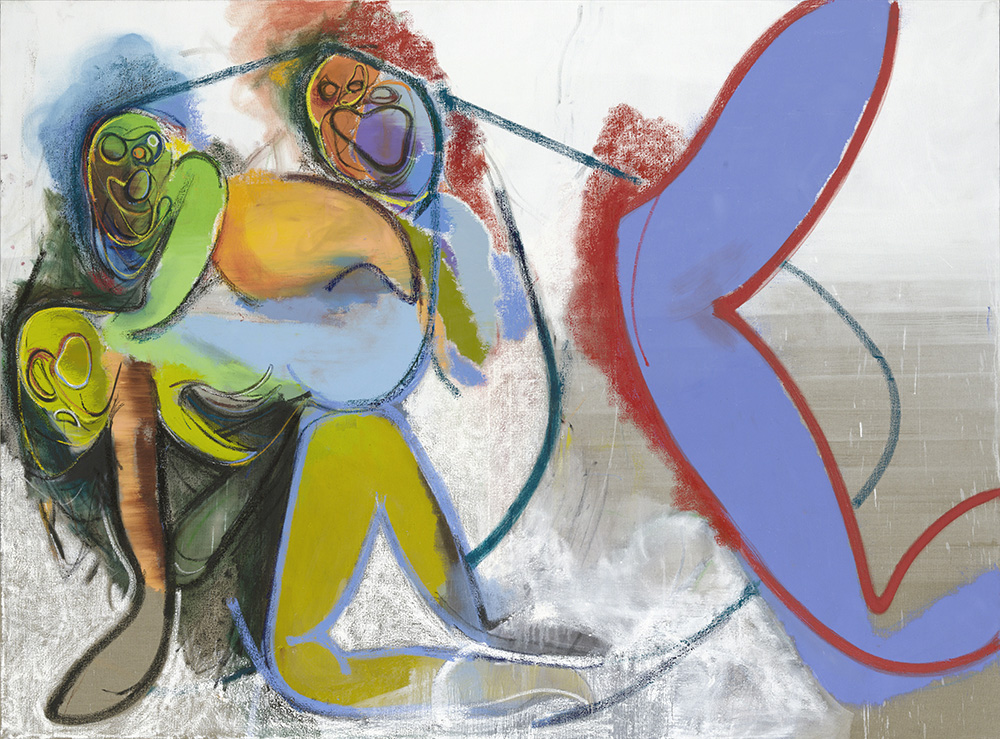ART-PRESENTATION: Daniel Richter-I Should Have Known Better
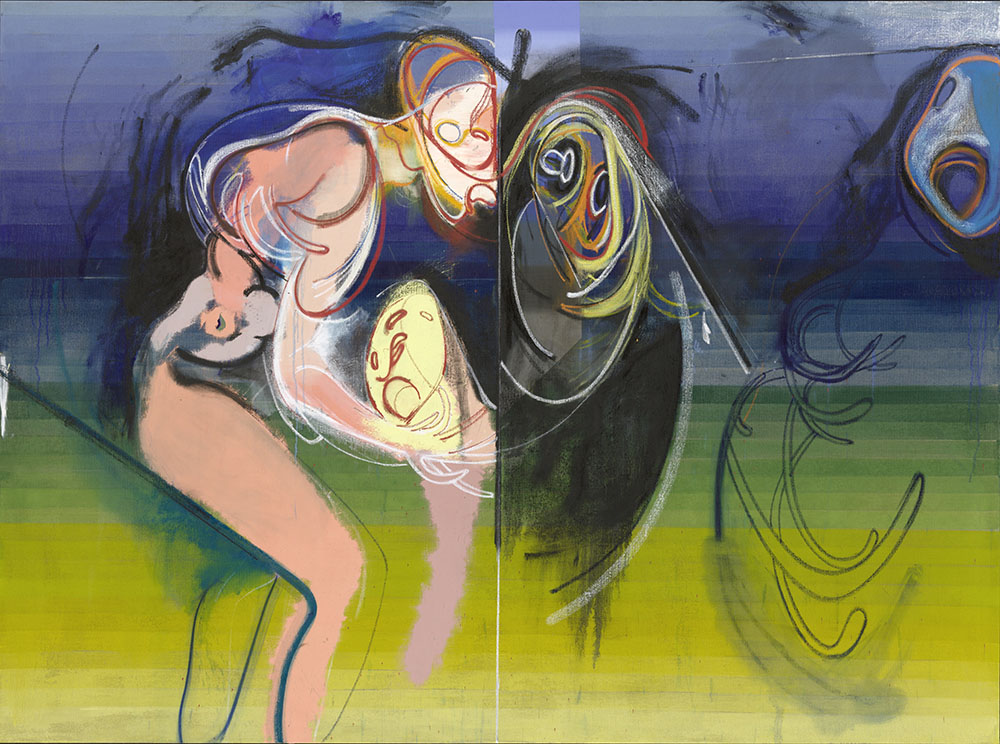 We can begin by tracing Daniel Richter’s path with his teacher generation, the painters working in Germany in the 1980s. This generation of so-called “New Wilds” combines an anarchic approach to form and content of painting with a propensity for large formats and energy-charged subjects. One of them is Werner Büttner, who was Daniel Richter’s teacher at the University of Fine Arts in Hamburg.
We can begin by tracing Daniel Richter’s path with his teacher generation, the painters working in Germany in the 1980s. This generation of so-called “New Wilds” combines an anarchic approach to form and content of painting with a propensity for large formats and energy-charged subjects. One of them is Werner Büttner, who was Daniel Richter’s teacher at the University of Fine Arts in Hamburg.
By Dimitris Lempesis
Photo: Galerie Thaddaeus Ropac Archive
Daniel Richter presents new large scale oil paintings in his solo exhibition “I Should Have Known Better” at Galerie Thaddaeus Ropac in London. This group of artworks constitutes the next experimental step in a visual language which the artist has developed throughout his career. The figurative elements of the paintings, which appear to be pornographic, are dissolving into Abstraction. They take a both provocative and whimsical direction to delve into the absurd and strange, notably through a reversal of his own motifs Richter explains: “My concern is with the surface, this flat, tangled, never-changing scheme of figure constellations, in and out”. The figures seem to levitate and collide. The cannibalising shapes convey a sense of abstraction, which is reinforced by the background’s subtle gradations of colors. In the 1980s, Richter designed album covers and posters for a number of punk rock bands in Germany, and music continues to play an intrinsic role in his work today. He uses musical references to title his exhibitions and paintings, “I Should Have Known Better” takes its title from the title of a 1979 song by the British Post-Punk band Wire and music also acts as the framework for his painting process. Richter attended Hochschule für bildende Künste Hamburg from 1991-1995. Between 1992-1996, he studied with Werner Büttner, A second important point of reference for Daniel Richter during his student years was Albert Oehlen. He employed Richter as an assistant and so it follows logically that this role brought Richter into very direct contact with Oehlen’s pictorial ideas. Richter’s current style, which oscillates between figuration and abstraction, represents a radical departure from his former approach to painting, both in terms of subject and form. Through his constant questioning of what purpose painting can have in contemporary society, Richter aims at bringing contradictions to the surface. “It is hard to escape history and tradition, especially in something as conservative as painting,” says Richter, “I work with all these contradictions; my work is not sentimental or nostalgic”. Although not directly anchored in the digital, his practice reflects upon the influence of digital media and virtual reality on our perceptions. Recent technological developments, especially in the entertainment industry, have contributed to make the fantastical more plausible. Within that frame, Richter investigates the way fantasy has become a commodity and his paintings explore the relationship between repression and consumption. Since 2002 he has painted large-scale scenes filled with figures, often inspired by reproductions from newspapers or history books. These show conflict and menace in excessive aggression and vitality. The representation of artificial light, flashlight, thermal image or X-ray picture evokes an atmosphere of artificiality and nervosity. The theme of total surveillance seems to be an important motif in Richter’s œuvre – the association with infra-red and thermal imaging cameras is unavoidable, revealing a paranoid view. Richter’s subjects suggest allusion to current politics, but on closer inspection, we see that this is not so.
Info: Galerie Thaddaeus Ropac, 37 Dover Street, London, Duration 5-28/9/18, Days & Hours: Tue-Sat 10:00-18:00, https://ropac.net
